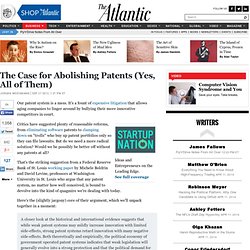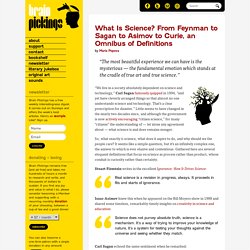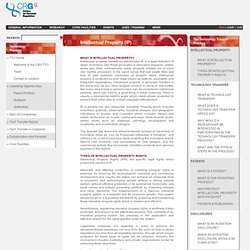

The Feynman Lectures on Physics. HyperPhysics Concepts. About HyperPhysics Rationale for Development HyperPhysics is an exploration environment for concepts in physics which employs concept maps and other linking strategies to facilitate smooth navigation. For the most part, it is laid out in small segments or "cards", true to its original development in HyperCard. The entire environment is interconnected with thousands of links, reminiscent of a neural network. The bottom bar of each card contains links to major concept maps for divisions of physics, plus a "go back" feature to allow you to retrace the path of an exploration.
Part of the intent for this exploration environment is to provide many opportunities for numerical exploration in the form of active formuli and standard problems implemented in Javascript. New content for HyperPhysics will be posted as it is developed. A resource that was initiated as a resource for local high school physics teachers whom I had taught has expanded into an intensively used website worldwide.
Welcome to ACS Webinars » ACS Webinars™ Www.mhhe.com/physsci/chemistry/essentialchemistry/flash/hybrv18.swf. The Case for Abolishing Patents (Yes, All of Them) - Jordan Weissmann. Our patent system is a mess.

It's a fount of expensive litigation that allows aging companies to linger around by bullying their more innovative competitors in court. Critics have suggested plenty of reasonable reforms, from eliminating software patents to clamping down on "trolls" who buy up patent portfolios only so they can file lawsuits. But do we need a more radical solution? Would we be possibly be better off without any patents at all?
That's the striking suggestion from a Federal Reserve Bank of St. Here's the (slightly jargony) core of their argument, which we'll unpack together in a moment: A closer look at the historical and international evidence suggests that while weak patent systems may mildly increase innovation with limited side-effects, strong patent systems retard innovation with many negative side-effects. What do we get from all this? Eliminating patents altogether, Boldrin and Levine say, would also have fewer negative consequences than most of us assume. A GRANEL. What Is Science? From Feynman to Sagan to Curie, an Omnibus of Definitions. By Maria Popova “The most beautiful experience we can have is the mysterious — the fundamental emotion which stands at the cradle of true art and true science.”

“We live in a society absolutely dependent on science and technology,” Carl Sagan famously quipped in 1994, “and yet have cleverly arranged things so that almost no one understands science and technology. That’s a clear prescription for disaster.” Little seems to have changed in the nearly two decades since, and although the government is now actively encouraging “citizen science,” for many “citizens” the understanding of — let alone any agreement about — what science is and does remains meager. So, what exactly is science, what does it aspire to do, and why should we the people care?
INTELLECTUAL PROPERTY. WHAT IS INTELLECTUAL PROPERTY?

Intellectual property, sometimes abbreviated IP, is a legal definition of ideas, inventions (like those generated in laboratory research), artistic works and other commercially viable products created out of one's own mental processes. In the same sense that real estate titles and bills of sale establish ownership of tangible items, intellectual property is protected by such legal means as patents, copyrights, and trademark registrations.
Intellectual property is generally handled in the same way as any other tangible product or piece of real estate. Not every idea inside a person's mind can be considered intellectual property, which can only be a good thing in some instances. There is usually a commercial viability angle which needs proper protection to prevent theft of the idea or outright copyright infringement. TYPES OF INTELLECTUAL PROPERTY RIGHTS Intellectual Property Rights (IPR) are specific legal rights which protect the owners of IP. Database right. A website about the Scientific Method, Research and Experiments. The Scale of the Universe 2.
2012 March 12 - The Scale of the Universe Interactive. Discover the cosmos!

Each day a different image or photograph of our fascinating universe is featured, along with a brief explanation written by a professional astronomer. 2012 March 12 The Scale of the Universe - Interactive Flash Animation Credit & Copyright: Cary & Michael Huang Explanation: What does the universe look like on small scales? On large scales? Tomorrow's picture: dust before galaxies Authors & editors: Robert Nemiroff (MTU) & Jerry Bonnell (UMCP)NASA Official: Phillip Newman Specific rights apply.NASA Web Privacy Policy and Important NoticesA service of:ASD at NASA / GSFC& Michigan Tech. Alice In Physics. Archive - Richard Feynman: Fun to Imagine - Using physics to explain how the world works. Diagrama de bifurcación. Ejemplo de diagrama de bifurcación.

Bifurcación de Pitchfork[editar] La bifurcación de Pitchfork es habitual en sistemas dotados de alguna simetría. Al igual que las bifurcaciones de Hopf, las bifurcaciones de Pitchfork pueden ser supercríticas o subcríticas. Las supercríticas tienen la forma normal: Las subcríticas tienen la forma normal: Ruptura de la simetría en sistemas de bifurcación[editar] Ruptura de simetría en una bifurcación de Pitchfork ya que el parámetro epsilon ha variado. epsilon = 0 es el caso de bifurcación de Pitchfork simétrica. En un sistema dinámico como el cual es estructuralmente estable cuando , si un diagrama de bifurcación es dibujado, considerando.